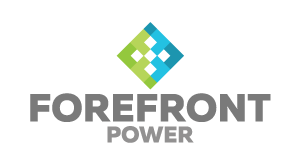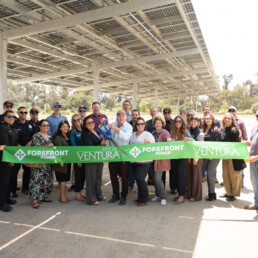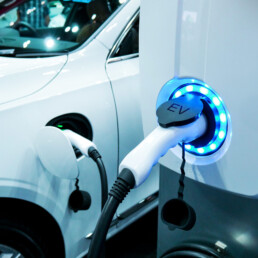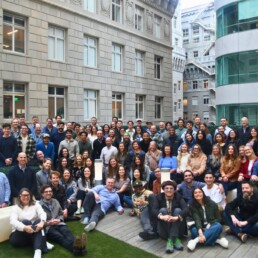
New York state is on a mission to reduce climate change. With an ambitious goal of reaching 100% clean energy by 2040, Governor Andrew Cuomo created a comprehensive energy strategy known as Reforming the Energy Vision (REV). The REV program, “helps consumers make more informed energy choices, develop new energy products and services, and protect the environment while creating new jobs and economic opportunity throughout the State.”
Under REV, the Value of Distributed Energy Resources (VDER) and NY SUN programs were created to help make solar and storage more affordable and accessible for customers. This article will provide an overview of how these programs operate and how customer savings are calculated.
THE VDER Program
In support of Reforming the Energy Vision, the New York State Public Service Commission established a new way to compensate those who invest in solar energy more accurately. This mechanism, called the Value of Distributed Energy Resources (VDER) or the Value Stack, resulted in a more stable determination of its value and benefit to the customer than its predecessor, net metering.
This program, as adopted by the NYPUC, calculated the value of solar through a pricing mechanism known as “VDER value-stack” Here are the components of the value stack:
- LMBP – Location-based Marginal Pricing – The wholesale value of energy in the local market
- ICAP – Installed Capacity – The cost of resources required to deliver energy to the utility.
- E – The environmental benefits of solar and guaranteed by NYSERDA
- DRV – Demand Reduction Value – Lump-sum based on the generators average hourly output during the peak hours from the previous year multiplied by the DRV rate in effect
How does the VDER Program Work?
Every month the utility will transfer a credit equal to the VDER rate multiplied by the number of kilowatt-hours produced by the customer’s solar array. The customer will then be billed per the PPA agreement. Note that the VDER rate fluctuates by 1-2 cents depending on the utility territory.
The difference between the VDER rate and the PPA rate multiple by the hours generated annually will total the annual savings for the customer.
10% of VDER rate * KWh Annually = Annual Savings
Most importantly, customers should understand that this is a monetary credit on their bill which is applied to their consolidated bill. This allows customers to take on other forms of supply agreements and potentially find additional savings. The pricing of this program will remain in effect for 25 years.
NYSERDA Incentives
The New York State Energy Research and Development Association, otherwise known as NYSERDA, has set up several of incentive programs to help make solar more accessible to customers, most notably the NY SUN MW Block and Storage Adder programs.
Historically, The NYSERDA incentive has decreased in value since its inception. As the cost of solar has decreased, so have incentives. The current NYSERDA MW Block program declines in value as more solar comes online. Once every block is fully subscribed, the incentives will no longer be available. Some blocks are filling up faster than others, including commercial, so the timing to get in on the action is ripe.
What About Federal Incentives?
The Solar FITC was enacted in 2006 and was originally valued at 30% of the CAPEX of the project. In 2015 the FITC was given a multiyear extension at 30%. However, in 2020 the FITC has begun stepping down in value, currently hanging at 26%. Here is the stepdown schedule:
- 2019 – 30%
- 2020 – 26%
- 2021 – 22%
- 2022 – 10% Commercial, 0% residential
For more on how NY SUN and the Solar FITC works, refer to this blog.
Trends in New York Distributed Generation
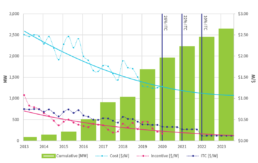
The graph above illustrates how local incentives, installed costs, and federal incentives have fluctuated, and are predicted to over time. With costs at an all time low and incentives beginning to drop, customers have their best changes of locking in savings sooner rather than later.
Finding the Right Partner
To the average customer, navigating incentive programs and calculating savings can be difficult, but it should not deter you from pursuing renewable energy solutions that will ultimately benefit your business. Having sufficient understanding of incentives and knowing your options is important but finding a reliable partner that can help you do both is the key to executing a successful project.
ForeFront Power understands what it takes to make solar and storage pencil in New York, with over 70 MW of projects under development and operation. Our long-standing experience, knowledge of the market, and reputation for high-quality projects make us a leader in renewable energy development. ForeFront Power’s experts can provide a free, non-obligatory evaluation to see which energy solutions are right for you.

Interested in learning more?
We would love to discuss how our solutions might be a fit for your organization. Contact one of our solar, storage, or e-mobility experts today:
